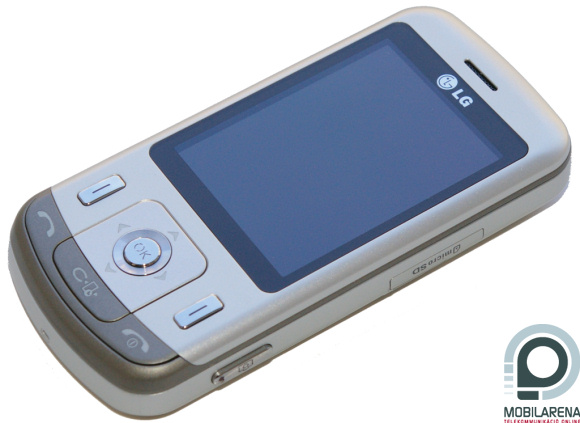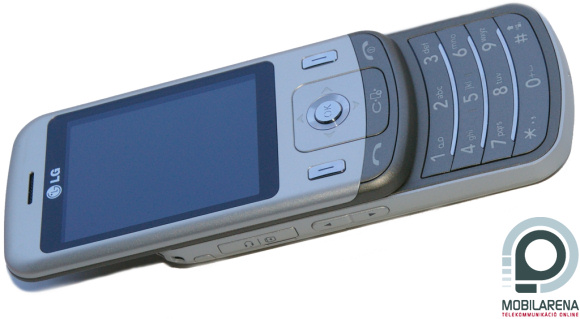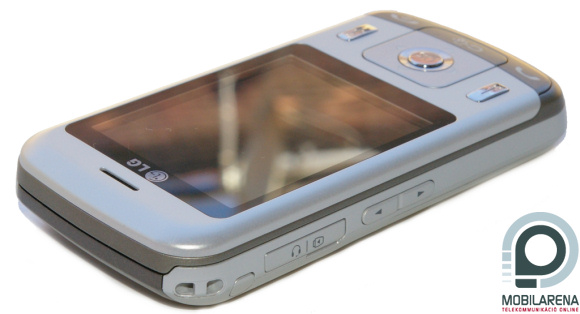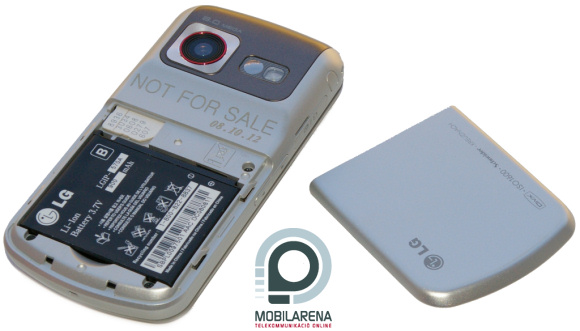Introduction, accessories
We have already written it a couple of times that one should really pay attention to LG, as they are one of the greatest manufacturers of the future – or even the present. The handsets we get from them just keep us being sure of this opinion. Recently we had a nearly flawless LG Arena, after that we had a preview of a “never before seen” handset (GD900), and now I’m holding KC780 in my hands, which follows the great Korean recipe: put all the features in a modest case and sell the stuff much cheaper than the rivals.
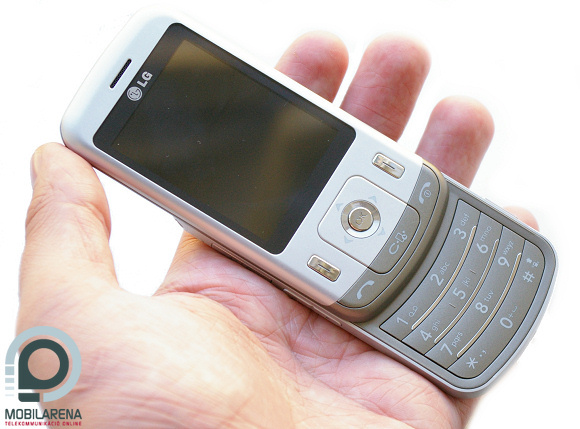
The subject of our current review is a slider that looks like any other at first and based on its price it’s targeted at the mid-range. It has a low-keyed design, it looks modest, but there is an 8 megapixel camera on its back, which is the currently available highest resolution on a mobile phone, only high-end devices had such a high resolution until now – this is when I like LG a lot.
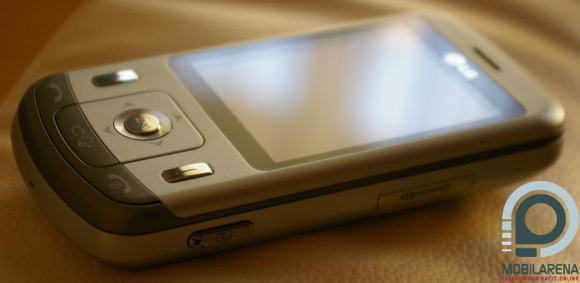
The handset has been provided by LG Hungary, which can be observed on the pictures on the next page, as the phone had the following text engraved on it: Not for sale, 08.10.12.. We surely had a pre-marketing sample model, but the already launched final version probably didn’t change much, so we got this one with the final software – and of course with not so final accessories, as the phone, which came in a plastic bag, had only a charger and a stereo headset in the package.
Exterior
The handset is referred to as the slimmest 8 megapixel phone, which is surely true, but otherwise it’s an average slider with a size of 107 x 52 x 13.9 mm, while its weight is 119 grams. Since it’s a mid-range device, the used materials are also medium quality ones, KC780 is made of plastic, but these are better than the average – hard plastic, which provides a firm grip. The design and shape are not very unique, the corners are somewhat rounded, while the case is a bit thicker at the camera.
On top of the front panel there is the phone speaker and the inevitable LG logo, while below these there is the 2.4” QVGA display, which is an average one, as it has nice colors and it’s readable in sunlight, but it’s basically nothing more than any other similar solution. There is a slim black frame around the screen, which uses a bit of optical illusion to make the TFT panel look larger. This part is surrounded a nearly white, but still grey part, which ends in two softkeys and a five-way d-pad below the display. Below there is a darker area where we can observe the two call handling keys and the clear key – this is positioned very badly, as abuts with the navigation pad, I’ve pressed it lots of times instead of the down key, but I’ve got used to it after a couple of days.
The sliding mechanism is high quality, there is only a minimal amount of play. The numeric keypad has the same color as the keys on the bottom, the rows are separated with metal-looking horizontal bars. The keys are a bit convex, have a great pressure point and allow fast and steady typing.
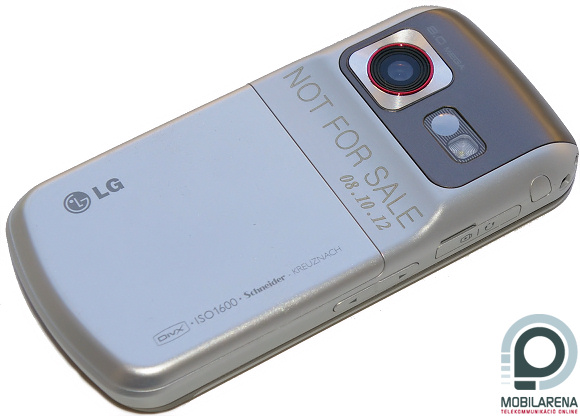
On the back of the device the label I’ve mentioned has been the most prominent part, but we shouldn’t be afraid about people not looking at our phone even though this label will be missing, as the frame of the camera lens is quite striking as well, which is probably intentional. Besides the circle inside the silver frame we will also find a LED flash and a mirror used for making self-portraits, while on the bottom of the back panel there are all kinds of labels, like DivX, ISO1600, Schneider, KREUZNACH. This is a camera phone.
In the top left corner we’ll see the hook for attaching the wristband, while below there is the charger/headset connector and the volume control keys. On the bottom there is only the microphone, while on the right we will find the camera’s shoot key and the microSD card slot.
Features
The handset brings no serious improvements in software, it has the menu system we’ve seen on KF510, which has now become completely stable and it’s still very easy to use. Of course there are some small tweaks, for example when pressing the clear key on the standby screen we get an interface where we can browse between the time/date display, the calendar and the image viewer – it looks like as if we were using widgets. When using the directional keys on the standby screen, we can instantly access the music player, the message editor, the profile selector and the favorites menu, where we can put our most frequently used applications. The wallpaper changes automatically when the appropriate theme is selected, the only permanent element is a small paper boat – a funny little feature.


We have two menu themes, they look almost the same, so this is not much customization. The main menu can be set to list or grid view; in the first case we have twelve menu items. The submenus are always displayed on a list, and just like on any other LG, we can use the horizontal direction keys to jump to the “neighboring” submenus in case we want to. The software speed is basically okay, but the fact is a fact: this is not the fastest LG I ever had for testing, I’ve been thinking that this might not be the final software version after all. Anyway, it could be faster, but it’s still okay to use.


The handset has 130 megabytes of onboard memory, so we won’t need to panic even if we forget to bring a memory card. The PIM functions are the usual ones, the calendar, which has only day and month views, can store 100 entries, which can have alarm times too. There is a notepad as well, here we can also store 100 notes, the maximum length is a joke: 80 characters, which is half an SMS. We can access the file browser (My Stuff) directly from the main menu, but we should check the Tools menu for the alarm clock, the calculator (with sinus/cosines calculation), the stopwatch, the unit- and currency converter and the quite good-looking world clock.


The phone supports Java applications, these are stored in one of the submenus of the Games & Apps menu in the top left corner. The applications folder is empty by default, but in the games section we can find a Sudoku and a lousy skateboard game. The M-Toy games collection is also here, this contains six mini-apps, which can be controlled with the gyroscope – by the way, we don’t many other programs which make use of this feature.
Phone calls, data transfer
The contact list can store 1,000 contacts, there are lots of extra information fields, we can set caller images and ringtones for each of the contacts, and they can be grouped as well. We can store 500 text messages on the phone, MMS and email messages are stored on the 130 MB internal memory. The call history has separate and unified views for received/missed/outgoing calls, the last 40 of each of them is stored. There are profiles and the phone can ring and vibrate at the same time.


The handset has no 3G support, we can use only GPRS or EDGE for transferring data via the mobile network, although the Teleca web browser is not that good to be used for long hours of web surfing – at least it supports JavaScript, that’s a positive thing. The GSM-module is triband (900/1800/1900 MHz), sound quality during calls is great, I didn’t experience any problems with that.
There is Bluetooth support at version 2.1 and it has stereo as well. The data connector is unfortunately a proprietary LG standard, but we can still use the data cable (which I suppose will be included in the commercial package) to turn the phone into a memory card reader. In the menus we can find one called TV out, so if we have the appropriate cable, we can connect the handset to a TV. There is an application called Bluetooth webcam in the Multimedia menu, when turned on, the handset starts looking for Bluetooth devices, I suppose the handset can be used as a webcam after the connection is established.
Camera, music player
So the camera has a resolution of 8 megapixels, autofocus, and the highest resolutions are 3264 x 2448 pixels for images and 720 x 480 pixels for videos. The camera’s software is pretty good, besides the basic stuff like white balance/JPEG compression/etc. we can also tamper with ISO sensitivity (100 - 1600), and there are features like face recognition, shooting on smile, software image stabilizer and panorama mode with manual image joining. Macro mode is turned on separately, and there is a feature called smart lighting, which I don’t know what it does besides decreasing resolution to 1 megapixel if turned on. We can record videos at normal speed and slow motion, the bit stutter video is recorded at 25 frames/second at the highest resolution in 3GP format – here’s a test video.

Although LG KC780 is not the king of 8 megapixel phones, it makes rather high quality pictures. The colors are not that bright, edge sharpness is enhanced from software (so it looks somewhat “digital”), noise level is medium, and pictures tend to be blurred at night and in poor lighting conditions. Still, the little LG is one of the best in its category, for this amount of money we could usually get a handset with half the resolution, although we have the rather cheap 5 megapixel Samsung G600 as the great contender. We can print the pictures taken with the phone any time, they’ll be good for the family album.


The music player software is absolutely okay, it can filter tracks by ID3 tags, it can run in the background, it has an equalizer with custom presets and we can set the volume in many levels. It won’t display album art, but we can survive that. Sound quality is surprisingly good via handsfree, the headset is of medium quality, it’s good for listening to music. There is an FM radio, and we have Muvee studio as a bonus, which can be used for making basic changes to our pictures.
Battery, summary
The handset has a 900 mAh battery, it kept the phone online for three days at average use (about an hour of talk per day and no music playback).
Summary: LG KC780 is a great handset. It’s assembled properly, it’s low-keyed and doesn’t show more than it is – a mid-range slider with a great camera and basic multimedia features. We currently have to pay about 200 euros to get it, Samsung U900 Soul has about the same price, and that has only a 5 megapixel camera, but it’s more exclusive (because of the metal case for example), so currently KC780 is surely the best choice for someone who’s thinking about getting such a handset. Considering LG’s practice, I am sure that its price will drop soon, and it will be a great buy for 145-160 euros. Until then, it’s a cool product.
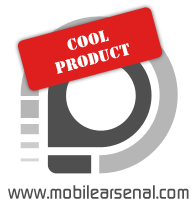 |
| LG KC780 |
Bocha
Translated by Szaszati
The handset has been provided by LG Hungary, thanks!
Specifications
| LG KC780 | ||
 |
General | |
| Technology | GSM | |
| Size | 107 x 52 x 13.9 millimeters | |
| Weight | 119 grams | |
| Available colors | Grey/white, black | |
| Display | ||
| Display diagonal | 2.4” | |
| Display resolution | 240 x 320 pixels | |
| Display type | TFT | |
| Number of colors | 262,000 | |
| Memory | ||
| Phonebook capacity | 1,000 entries | |
| SMS memory / max. MMS size | 500 / 300 KB | |
| Internal memory | 130 MB | |
| Memory expandability | microSD | |
| Data transfer | ||
| Frequency bands | 900/1800/1900 MHz | |
| GPRS / EDGE | yes / yes | |
| UMTS / HSDPA | no / no | |
| IrDA / Bluetooth | no / 2.1 (A2DP too) | |
| WiFi | no | |
| USB | yes | |
| Push-to-talk / RSS | no / no | |
| GPS receiver | no | |
| Basic functions | ||
| Profiles | yes | |
| Vibra function | yes | |
| Built-in handsfree | yes | |
| Voice dialing / voice commands | no / no | |
| Sound recorder | yes | |
| Alarm clock | yes, also when turned off | |
| Predictive text entry | T9 | |
| Software | ||
| Platform | LG proprietary | |
| WAP / HTML browser | 2.0 / yes | |
| E-mail client | yes (POP3, IMAP4, authenticated) | |
| Java | yes, MIDP 2.0 | |
| Games | 2 + M-Toy (6) | |
| Currency converter | yes | |
| Extra software | Muvee Studio, Bluetooth Webcam, document viewer (Word, Excel, PowerPoint, PDF), DivX 6 player | |
| Multimedia | ||
| Main camera | 8 megapixels, autofocus, LED flash | |
| Secondary camera | none | |
| Video recording | yes (720 x 480) | |
| Music player | yes, can run background | |
| Equalizer | yes | |
| FM radio | yes | |
| Battery | ||
| Main battery | 900 mAh Li-Ion | |
| Standby time | 450 hours | |
| Talk time | 360 minutes | |
| Others | ||
| - | ||
